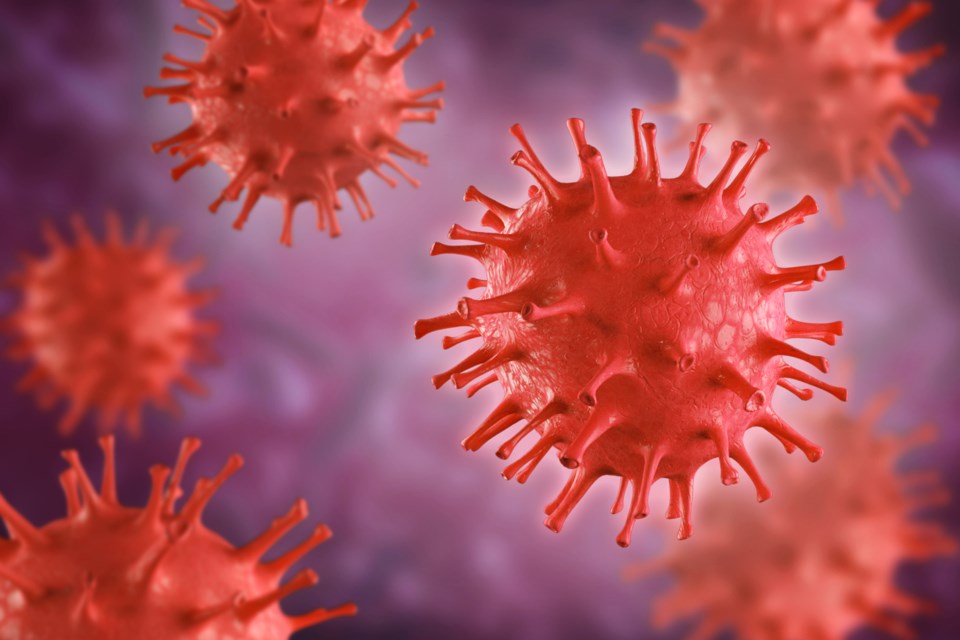As the summer of the BA.5 variant continues, it’s clear that COVID-19 isn’t vanishing from the North Shore anytime soon.
Official numbers of infections reported in the most vulnerable remain steady in North Vancouver and West Vancouver, with 38 new infections reported between July 17 – 23 (27 in North Van and 11 in West Van.) That’s about the same number as reported on the North Shore two weeks ago. The figure is considered a vast underestimate of actual numbers but does point to trends in infection rates.
Viral loads at the North Shore sewage plant, considered an indicator of community-wide infection levels, have fallen since quadrupling in the first week of July but still remain much higher than they were in June.
According to the most recent situation report from the B.C. Centre for Disease Control, “over the past week, viral loads at Lions Gate (sewage treatment plant) have increased by 16 per cent.”
The most recent measurement on July 18 showed 42,444 viral parts per litre, compared to 81,489 viral parts per litre on July 4 and 12,013 parts per litre on June 8.
Hospitalizations up slightly
COVID hospitalizations in Vancouver Coastal Health are also up slightly, according to BCCDC. There were 116 people with COVID in hospital in VCH as of July 28, compared to 102 people on July 14.
Ten of those people were in critical care. There were also two new COVID-19-related deaths in the past week in VCH.
BA.5 variant drives summer surge
According to the BCCDC, the newest and more transmissible Omicron variants BA.4 and BA.5 make up most of the COVID-19 cases and are driving the summer surge in COVID-19 infections.
“It’s also become increasingly clear that our immunity to the virus wanes over time," said Fiona Brinkman, a professor in infectious disease and bioinformatics at Simon Fraser University, who is also a member of the Coronavirus Variants Rapid Response Network (CoVaRR-Net), which is tracking and studying variants. "So a few months after a previous wave of infections, a new variant of the virus can infect or re-infect a significant proportion of people. And that's why we keep getting these waves.”
Just how fast immunity wanes varies considerably, says Brinkman.
In general, however, if it’s been over four months since you either received a vaccine or were infected by the virus, you may be at more risk of infection, including re-infection, said Brinkman.
When to get boosted
Fourth booster shots rolled out for those over 70 and people with compromised immune systems earlier this summer. They are now available to anyone who wants one, although the province is strongly encouraging most adults to wait until at least September.
Not all experts agree with that approach, including Brinkman.
“The government would prefer you hunker down and wait until the fall because there's going to be a new vaccine formulation that should work a bit better,” she said.
But she said given the current wave of infections, it may be hard to avoid the virus, and anyone who can count four months since their last booster or COVID infection should consider the shot sooner than later.
“I think it would be wise to get the booster now with the existing vaccine, because it will protect you significantly for this wave and for a good few months,” she said.
Brinkman added she wouldn’t be surprised to see a fifth booster rolled out sometime next winter.
The problem with COVID-19 is that while vaccines protect against serious illness, neither infection nor vaccines currently offer much protection against infection, said Brinkman.
“A full-blown COVID-19 infection is very similar to flu in many ways. But the difference is, when you get flu, you do not get it again four to six months later. You are protected for quite a long time,” she said. “So it is a different ballgame with COVID.”
Nasal vaccines offer hope
There is some light at the end of the tunnel however. Brinkman is enthusiastic about the potential of nasal spray vaccines currently being tested, which could potentially better stop the virus before it causes an infection.
It’s early days in clinical trials, she adds, “but the studies to date have been very promising.”
A more troubling sign is the continued low vaccination rates among children.
Between 60 and 70 per cent of children five to 11 on the North Shore have received two doses of COVID vaccine.
But those are among the highest rate of vaccination for children in the province. In many other communities, vaccination rates for children have hovered between 10 and 30 per cent.
“I'm very concerned that not enough children are getting vaccinated,” said Brinkman.
Vax for youngest kids approved
Recently, Health Canada approved the first COVID-19 vaccination for children between six months to five years of age.
Vaccine appointments for those youngest children will be available beginning Aug. 2.
[email protected]
twitter.com/JaneSeyd




